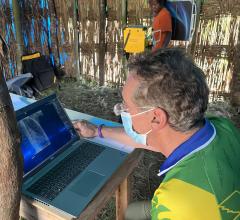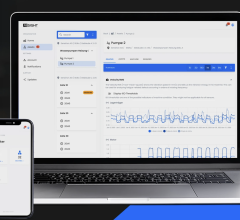
To understand the issues facing radiologists, it is important to identify the changes over the past decade that have transformed how radiologists are being reimbursed and the impact this has had on their jobs. Significant declines in reimbursements followed by rapidly changing payment models and interoperability initiatives are all coming to a head under the Merit-based Incentive Payment System (MIPS); one of two value-based reimbursement models under the Medicare Access and CHIP Reauthorization Act of 2015 (MACRA).
Along with determining how to be successful when transitioning to new, value-based models, radiologists must look for new ways to better engage their health systems in order to further improve patient outcomes while decreasing cost.
1. How Do I Lower the Risk of Potential Reimbursement Cuts With MIPS?
The Centers for Medicare & Medicaid Services (CMS) has called 2017 a “go at your own pace” transition year, so participation in MIPS in 2017 will help you gain experience before the negative adjustments increase in the following years. Aside from whether you decide to report at a group or NPI level, there are key components of MIPS that radiologists need to understand. As part of MIPS, radiologists in 2017 must determine if they are patient or non-patient facing, adopt clinical improvement activities, and explore the use of clinical data registries to help them be successful in submitting their quality program data.
• Understand the Difference Between Patient Facing and Non-patient Facing
It is essential to understand the distinction between patient facing and non-patient facing as the former must participate in the advancing care information component of MIPS. If the service is deemed patient facing, radiologists need to submit two key measures for advancing care to satisfy that requirement. For the most part, radiologists are only thinking of the direct, “obvious” patient-facing services such as rounding on a patient from a noninvasive procedure. However, there are other procedures that are in a grey area, leaving many radiologists asking questions like, “What if I do a paracentesis, or what if I am indirectly supervising a procedure that is patient facing?”
As a result of this confusion, the American College of Radiology and CMS created a current procedural terminology (CPT) listing of codes that designate if services are patient facing or non-patient facing. This allows groups to look back at the distribution of these codes and determine if they are required to meet the advancing care information component of MIPS. If a doctor is considered patient-facing in 2017 and they do not have a CEHRT, they may fall under the hospital-based eligible clinician exemption in the advancing care information (ACI) performance category. If the clinican sees 75 percent of their covered professional services using POS 21, 22 or 23 then you could be exempt from ACI also.
• Establish a Mechanism to Analyze and Report Clinical Practice Improvement Activities
Groups need to establish a mechanism to measure and analyze what clinical improvement activities they should be reporting. It is important to decide what is considered a best practice and what is available at the practice. In many cases, this does not have to be a heavy lift for radiologists.
For example, one group was concerned after finding that 60 percent of their follow-ups were not further investigated as recommended. In response, they created a bullet proof mechanism to help mitigate this risk. If a woman was due for a follow-up mammogram in six months and nothing occurred, the radiologist receives a note in six months and one day that said, “Patient X is due for a follow-up mammogram.” This alert helped ensure that the patient would get scheduled for her follow-up visit. Despite its simplicity, this critical process is not happening enough. Without a clinical improvement system in place, radiologists must advance to the next patient and hope that the system tracks and prompts clinicians with the appropriate follow-ups. This is just one example of the many simple things that groups can start incorporating into their systems to realize some of the huge risk mitigation benefits. The tweaks also benefit the health system, the radiologist and more importantly, helps improve patient care and patient satisfaction.
• Leverage a Clinical Data Registry
Confusion remains high across the industry as to whether or not to use a qualified data registry company. Part of this confusion stems from the fact that it is quite possible to avoid a negative payment adjustment in 2019 simply by continuing to report via claims based quality measures in 2017. The dilemma for many groups is that if they do not choose to invest in using a qualified data registry this year, they risk receiving a negative payment adjustment in subsequent years due to the new complexities under MIPS.
Under a registry, there is a larger selection of measures thus increasing a group’s chance for successful reporting. There are also no major negative consequences for radiologists who actively engage in the MIPS program with a data registry as the registry allows you to proof the data set before submission to Medicare. Additionally, radiologists will gain applicable experience. With claims-based reporting, there is no audit or review process, so if the initial submission is inaccurate, the individual or group would be penalized.
Many groups are concerned about the cost of a registry since it can be $200 to $500 per physician. However, contemplate a four percent payment reduction on a group that collects $5 million annually in Medicare payments — that equals $200,000 in penalties in just one performance year. If groups pay $15,000 to $20,000 a year for a registry, they could not only avoid penalty payments, but also see a positive ROI from incentives that would offset any costs incurred. In 2018 and 2019, the penalties are expected go up and incentives are expected to go down, providing even more reason for radiologists to get involved now while incentives are available. However, if a practice has multiple physicians or tele-radiology physicians, a registry can become rather costly.
2. How Can I Improve Patient Outcomes and Satisfaction While Decreasing Cost?
Scrutiny over appropriate use is continuing to be a significant issue as healthcare continues to look for ways to take cost out of the system while improving patient outcomes. Proactivity and better leveraging the data that already exists are just a few tactics that radiologists can adopt in 2017.
• Develop a Proactive Stance on Appropriate Use
Scrutiny over appropriate use is going to continue to be a significant topic as it may have some short-term negative utilization impact on radiologists. Radiologists need to be proactive and really focus on navigating a health system’s ordering of radiology services because hospitals, payers and ACOs want to ensure that radiologists provide the appropriate amount of radiology at the right time, with the right expertise level to help improve patient outcomes and reduce cost. Educating referring doctors on the appropriate use of radiology services can also create a win-win scenario for both radiologists and doctors. In some scenarios, order volume may decrease but in others, they may find a service that was indicated but was not ordered.
• Analyze Group Level Data More Effectively for Improved Radiologist Utilization
Currently, there is a lack of analysis being done at a group level and many hospitals are sitting on a trove of untapped data. In the right clinicians’ hands, this data can be useful. The conundrum, however, is that hospitals typically do not let radiologists access this data. Radiologists have different data requirements and if groups can take advantage of this information, they can empower win-win opportunities that improve a radiologist’s workflow, as well as provide more effective radiology service utilization.
Currently, many radiology groups can not report their work output by date and time stamping. But access to this information could lead to cost savings and more efficient staffing. For example, if physicians express the need for more help from 7–10 p.m. on a Friday night, the practice can add a doctor. But what happens when their income falls? With data and systems that can report by time slot, radiologists can practice smarter staffing while resulting in income optimization.
Increased exposure to more data can also empower more risk mitigation and quality outcome analysis. As groups become more comfortable in data analysis, they will be more effective in asking questions like, “Can I measure and report my referring physician’s ordering patterns? Can I more effectively report on a real-time basis? How bullet proof is my peer review program and quality program?”
Be Comfortable with Short-Term Losses for Long-Term Gains
Looking ahead, it is important that radiologists understand what they need to do to protect their livelihood as there will be continued scrutiny over appropriate use. In the short term, this may have negative utilization impacts on radiologists because it stops them from ordering unnecessary services. However, this will help radiologists better navigate a health system’s ordering of radiology services. Groups also need to ensure they are participating in the new payment models to avoid finding their name on negative quality ratings. As the power continues to shift to the hands of the consumer, this will be especially critical for survival.
Editor's note: Pat Free, vice president of radiology operations at McKesson, has over 17 years of experience with the company. Currently, Free is responsible for national medical practice business management and consulting. Prior to McKesson, Free was director of medical practice operations at Ascens.


 April 22, 2024
April 22, 2024 








